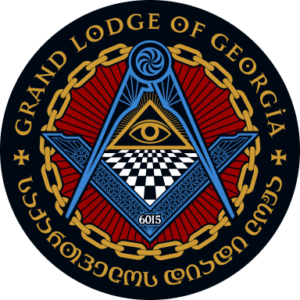main » What is Freemasonry?
- What is Freemasonry?
"Some people think that true patriotism is opposed to cosmopolitanism, but this is a mistake. Every true patriot is a cosmopolitan just as every sensible cosmopolitan (and not ours) is a patriot."
Vazha Pshavela, 1905
The Masonic Order is not a secret society, it is a society with secrets. There are certain things that are only available to members of this community. Despite the views in our society, in the modern world reality freemasons are not hiding, their meeting places are known in democratic societies without any "conspiracy". Freemasons are engaged in charitable activities, many lodges have many social projects, their own website on the Internet, which is intended for public awareness.
Freemasonry is neither a religion nor a religious organization, nor a political group or a society with a unified political vision. The Order of Free Masons unites only those men who, based on ritual symbolism, want to create better than good, ennoble human morality and bring good to those around them.
Symbolic Masonic development - a system within the jurisdiction of the Grand Lodge - includes three levels - Apprentice, Fellow and Master, after which a brother Mason can receive additional development and knowledge in various directions, e.g. the oldest and received Scottish in the statute and/or kingdom arch, of the Rosicrucians in society, Martinists in the order, kingdom in the arch etc..
We can get lost in the search for the origins of the Masonic fraternity. It is safe to say that Masonic guilds have existed since ancient times, and only in the 18th century did they transform, expand into grand lodges, introducing the principles of universal brotherhood - around a common philosophy and way of life. Great building unites Masons - building a better person, a better society and a better world. Building a better world simply means instilling high morals, spiritual principles and the common use of the planet's resources to achieve the common goals of humanity.
Freemasons seek the light, and the search for that light may take many years or even a lifetime. Each Mason is free, each lodge independent. Several (at least three) symbolic lodges form a sovereign dyad lodge, in the foundation (consecration) of which another regular dyad lodge participates. Every Grand Lodge has its own jurisdiction, which extends over a certain territory.
In the lodges of the same jurisdiction, we may see different rituals, symbols or views on this or that issue, but the common principles - the foundations (landmarks) are unchanged and one for all. Freemasons are guided by the principle of "do it to another he, which do you want, that someone else to make you you", kindness, charity, strength and courage are characteristic features of a Mason. First of all, Mason is a worthy man who strives every day for self-improvement, for the well-being of his family, and for the strengthening of the country with the love of his homeland. By improving himself, he seeks to improve the world.
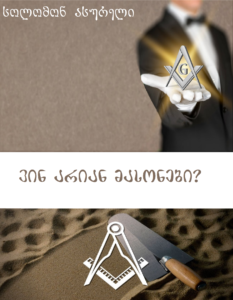
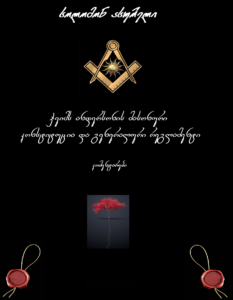
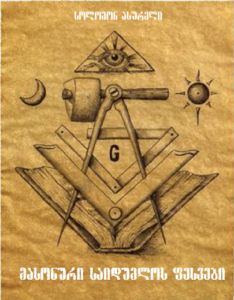
Recommended reading
If we rely on specific historical facts and analyze them, we will see that the Masonic Order in its present form on the European continent was laid by the practicing stonemasons of the Middle Ages. "Mason" is a French word and means a stonemason, and "Frank Mason" means a free mason. Many reliable sources claim that these guilds were merely the outer "packaging" of those who migrated from the East or returned to the European continent and brought "mystical" knowledge or practical experience. Necessity led to the introduction of many secret signs, greetings, and assembly symbols. A master mason from a foreign country freely asserted his connection with the Masonic guild, since most of the symbols and signs (landmarks) were common.
Part of the roots of the origin of the modern Masonic society is connected with the foundation, development and persecution of the Knights Templar, the strongest arguments and facts indicate that the main groups of knights at that time were free from the Pope. to Scotland set off. Scotland came under the jurisdiction of the Church of Rome and this area was an ideal place for the safety of members of the Templars at that time. Later, some of the knights joined the Masonic guilds, because they felt safe there and could move freely to different countries.
An important part of the general picture is the Renaissance period - people working in Europe in the 13th - 16th centuries, who tried to present a different way of thinking to the society. These people were unacceptable to the church and the royal families, because they saw in these people the greatest threat to their absolute rule and unshakable authority. Galileo, and Winch, Newton And others, people of various professions, tried to make a change in the scholastic period of the Middle Ages, in the vision and thinking of people. Such free thinking, reasoning and conversation in the age of the Inquisition, when even a little bit was burned at the stake, was dangerous to life, so these people communicated their art or thought in secret code, codes and symbols, their gatherings were held in secret. The main theses were written on specially treated papyri, if necessary, the displayed text disappeared when in contact with liquid.
Later, these people also began to join guilds of practicing masons. In the same period, the terms "guilds of professional masons - lodges" were introduced, i.e. lodges composed only of professional, practicing masons, and also those lodges where intellectuals, gentlemen and non-professional - i.e. "recognized" - "accepted" masons were already members. In the 18th century, there were no more guilds of professional masons, they were completely assimilated into the recognized or "accepted" Masonic guilds.
In fact, the forerunners and founders of today's Masonic society were: the professional stonemasons of the Middle Ages; various esoteric-Christian orders, including the military order of the Knights Templar (templars); Travelers coming from the East, or societies that started a new development on the European continent (including Rosicrucians); And since the Renaissance, those artists, intellectuals, and thinkers whose activities in the Church's imagination were dangerous to the foundations of its absolute rule and system of mass control.
The first documentary samples about the work, operations and rituals of lodges can be found in the 16th-17th centuries. Which indicates that the lodges were formed and developed much earlier. e.g. A document from 1646 clearly shows how an Englishman, someone Elias Ashmole. It may be said, and it is true, that the Masonic Order and Masonic Lodges, in their present form, were founded and developed in a free Scotland, all manuscripts and facts point to this circumstance. The Masonic Order "in its present form" is the unification of diverse Eastern-Western knowledge and experience "under one roof", including esoteric, hermetic, cabalistic, exoteric, Rosicrucian, alchemical, theurigical or other knowledge and experience accumulated by mankind over the centuries.
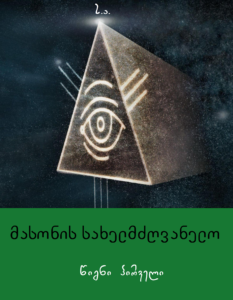

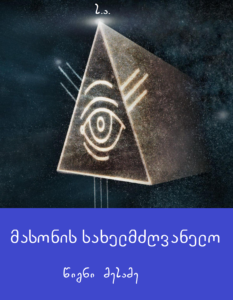
Recommended reading
It is important to distinguish not only Masonic charters and additional degrees, but also the main essence of Freemasonry, including the difference between "new" [modern] and "ancient" as well as the difference between "regular" or traditional and non-regular, so-called. Among "liberal" Freemasonry. In both profane and Masonic society, there is a constant discussion about what regularity is and who is regular and who is not, what defines this regularity, what are the criteria for regularity, etc. This matter, you will remember, is rather delicate and complicated, yet fundamental and important to our [Masonic] Order.
We must understand where the line is drawn between Masonic and non-Masonic structures. The limit is in principles and values, first of all. There are many different secret societies, clubs, organizations or sects in the world, some of them present themselves as Masonic associations, but in reality they have nothing to do with Freemasonry. The main criteria that define "freemasonry" and distinguish the pseudo so-called From "Masonic" organizations, it is the principles of regularity.
Regularity means that the work carried out together by people who recognize each other as Masons follows certain rules, norms and traditions. Initiation and elevation are part of a tradition that has been handed down to each new "generation" of Masons over the centuries. And recognition is necessary because only following rules and traditions is not enough. Recognition includes proof that we belong to an uninterrupted chain of Masonic fraternity.
There are often cases when two regular Grand Lodges do not recognize each other, or have recognized and ceased to recognize each other, or e.g. Two equally traditional jurisdictions in the same state recognize two different local Grand Lodges. Regularity is a set of rules by which a Mason has the right to be called such. These rules are called Masonic Cornerstones. There are many such cornerstones, but the basic principles are the same for all jurisdictions.
However, there are also differences, e.g. In regular Anglo-Saxon and European-Continental Freemasonry. In England, one of the most important Masonic landmarks [cornerstone] is the belief in "such" God, which is "revealable", while in European-continental Freemasonry, belief in God, the Creator, does not imply belonging to any specific and traditional religion, God is individual.
Another cornerstone of regularity is the collection of sacred laws presented in the lodge and opened during work. Such a book can be a holy book of any traditional religion - the Bible, the Koran, the Vedas, in which only the Bible is opened. However, in French-Continental Regular Freemasonry, a neophyte can take an oath on any holy book, since the most important thing here is to take an oath or condition, which is "sacred" and is taken before the Great Architect of the Universe. The collection of sacred laws represents the first luminary of light, and the other two - Fargal and Gonio - are symbols of matter and spiritual origin.
A necessary cornerstone (landmark) is the work of the brothers in the lodge, in the first three symbolic degrees of the order. Each lodge is headed by [more] decent Master and two first and second watchman (or Chief and younger watchman in Anglo-Saxon lodges.). The lodge must be closed, this implies not only the restriction to the profane, but the supervision of the admission of a brother of the proper quality, to this or that work. Also, according to Masonic rules, any Brother Master from a legally and regularly established Symbolic Lodge must be admitted to another regular and recognized Symbolic Lodge anywhere in the world. This rule applies with certain limitations to apprentices and fellows.
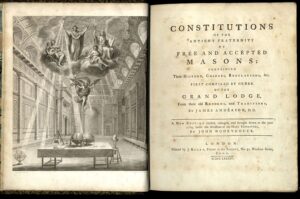
James Anderson's Constitution and General Regulations
Any Mason brother is obliged to obey the constitution and general regulations of the Grand Lodge, as well as the decisions of the Grand Master, the code of morals and ethics, as well as the internal regulations of his symbolic lodge. A brother who leaves the Order loses his status as a regular mason, while no one can deprive him of initiation [the secret of renunciation] and his Masonic oath remains valid.
One of the principles of regularity includes the sovereignty of grand lodges and symbolic lodges, freedom - one lodge has no right to interfere in the affairs of another lodge. Each Symbolic Lodge is free and subject to the decisions of the Grand Lodge - the Grand Master. Only the grand master (and in some cases his deputy) has the right to preside over any symbolic lodge, depose the worthy master, and vote on any decision of the lodge. The Most Worthy Grand Master delegates part of his own authority to the Most Worthy Brothers - Grand Officers, with whom he forms the Grand Lodge structure.
Freemasonry is not a classic democratic structure, despite the freedom - it is important to respect and obey experience. The main principle of freedom is the equality of all brothers. But in order for the temple of Aigo and the work of the structure to be effective - it is necessary for all brothers to know their place and function in this fraternal chain, so that instead of the wall of the temple, a pile of unhewn or even smoothed stones will come out.
Communication between the Symbolic Lodges and between the Symbolic Lodge and Grand Lodge is carried out by the Worshipful Master of the Worthy Lodge and the Lodge Secretary. This is the law. The internal administrative proceedings, relations and norms of the grand lodge or symbolic lodge are regulated by the general regulations of the grand lodge.
A significant Masonic cornerstone is the rule that the Grand Lodge independently supervises the symbolic first three degrees and that the Scottish Charter Council, Grand Chapter or other Masonic entity has no right to interfere with the activities of the Grand Lodge, nor vice versa.
It is forbidden to discuss religious and political issues in the lodge. Respecting another brother's opinion is important, even if we disagree. An individual's religious beliefs are the private business of a brother, as are his political views or affiliations, these matters remain outside the Lodge.
An important cornerstone of regular Freemasonry is also that a stonemason can only be a man, although this rule seems to many today to be an archaic relic. I believe that the so-called "problematic" here is more. "Mixed" work - a joint ritual assembly of men and women. Separate working women's Masonic lodges already have a history of one hundred and fifty years.
As for the recognitions, of course, the most important among them is the recognition of the few jurisdictions that are considered to be the bearers and transmitters of the Masonic light tradition, i.e. Scotland, Belgium, Ireland, France, England, etc. However, these jurisdictions are not in a hurry to recognize new grand lodges. . If a new grand lodge has ten or more recognitions from other regular grand lodges, it is considered regular. Territorial unity is also important, i.e. recognition of only one regular dyad lodge in one state. However, there are a number of exceptions in the world.
Taking into account all of the above, in March 2015, taking into account all the listed cornerstones, the oldest free and accepted order of masons (Masons) was founded in Georgia - of Georgia Great Lodge, which is still the only regular and sovereign Masonic union in the entire territory of the country. Despite many attempts to create different so-called Masonic union, you can't argue with Masonic legitimacy. The Grand Lodge of Georgia adheres to all principles of regularity and is recognized by the international Masonic society, having several dozen recognitions.
The principles of regularity have changed and improved, but these principles are only a matter of universal agreement, and the most important and unchanging thing in them is faith in the Creator. For example, in the twentieth century, a number of jurisdictions permitted and established separate ladies' lodges. This is not a universal position and depends on the views of the members of the Grand Lodge of Jurisdiction and the Symbolic Lodges within it. Mixed lodges and work are not allowed, it goes against the principles of regularity. Also, in many jurisdictions (including the Great Lodges of the United States of America, England, and Georgia), the minimum age of a candidate has been lowered to 18 years.
